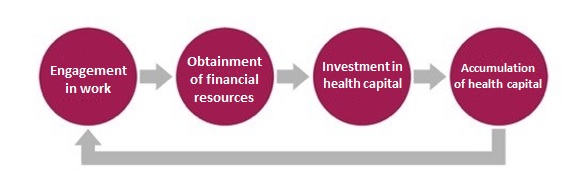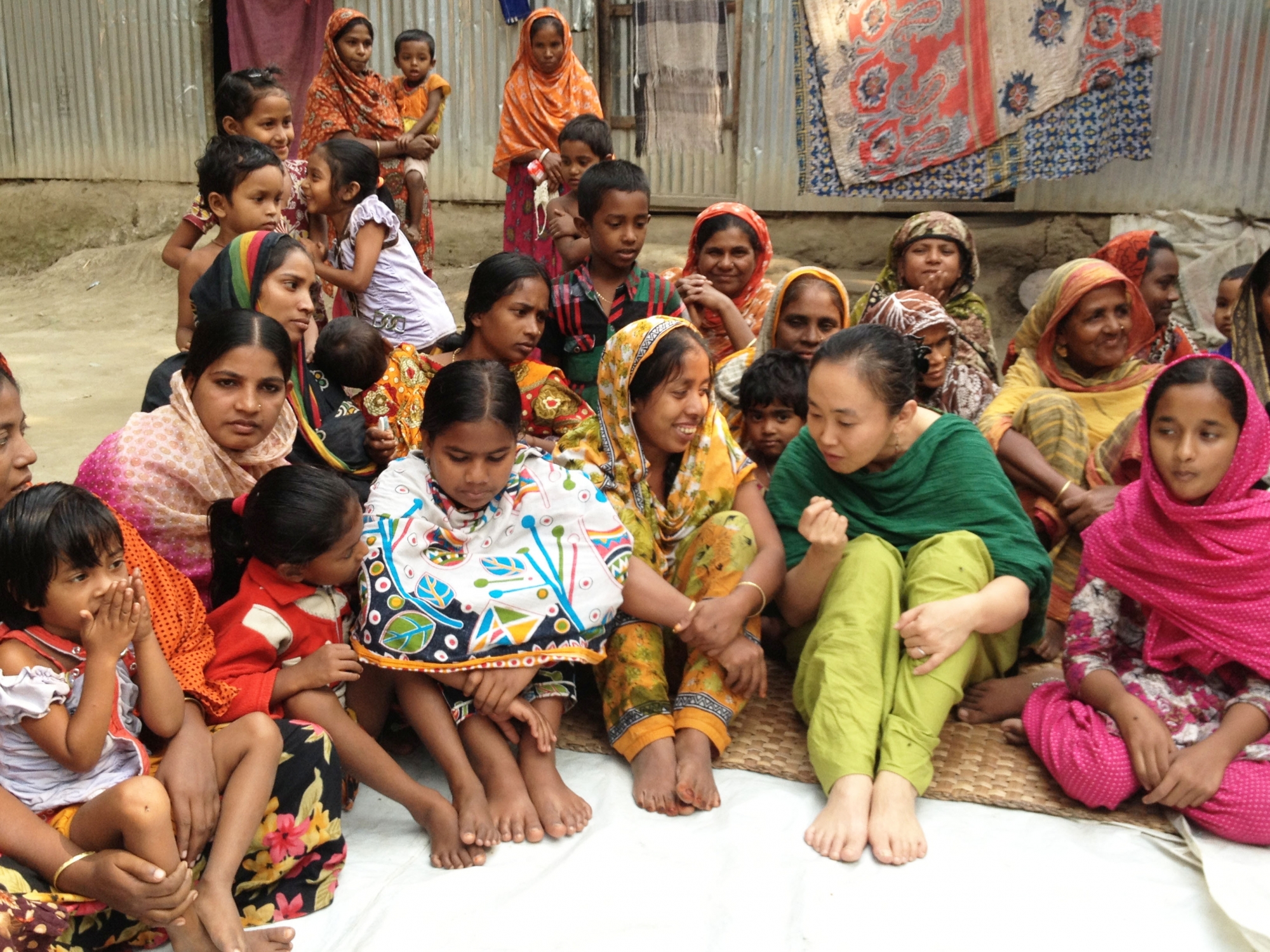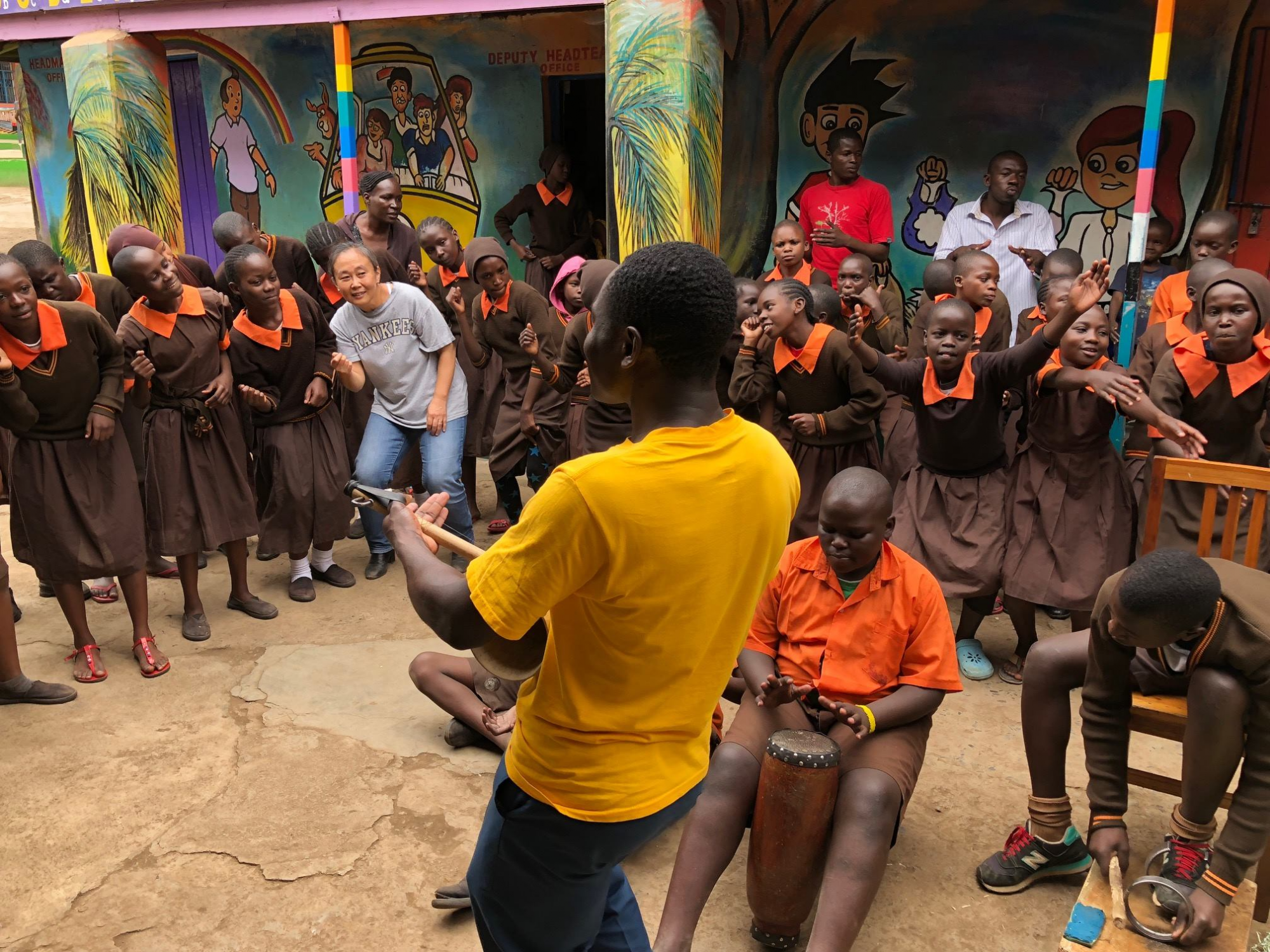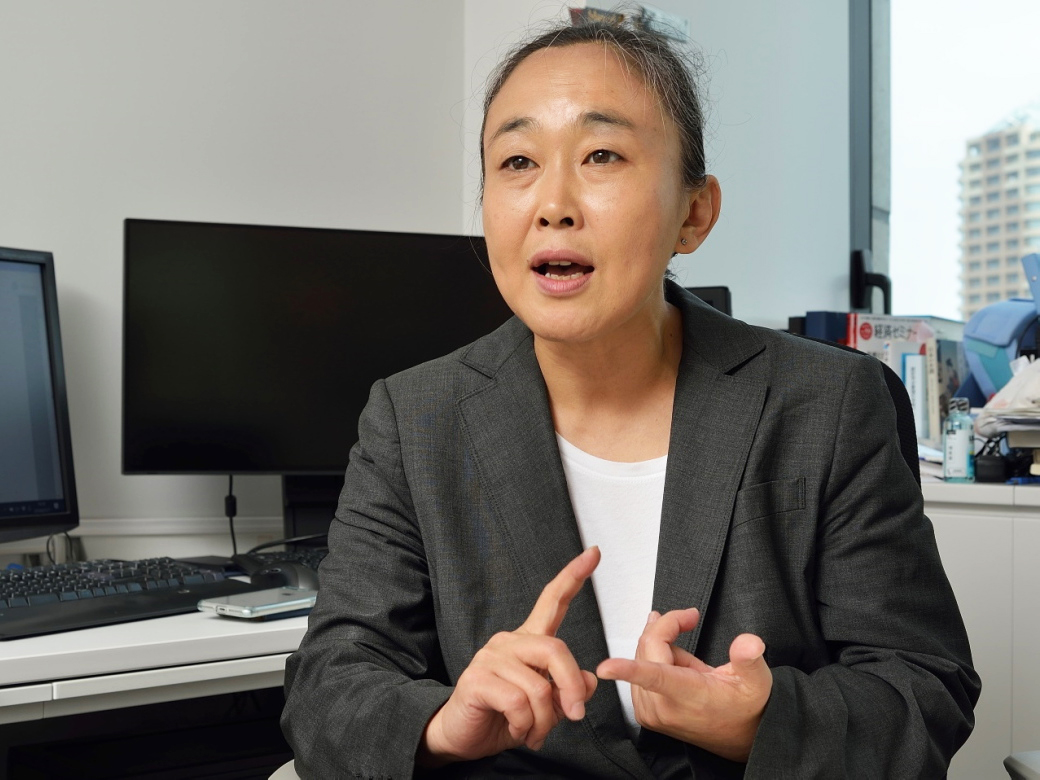Waseda Frontline Research Vol. 21: How should healthcare resources be used? A challenge of health economics (Part 1 of 2)
Wed, Nov 21, 2018-
Tags
Professor Haruko Noguchi, Faculty of Political Science and Economics
Health Economist
Part 1: The causal relation between social networks and health

Economics seeks ways to effectively use limited resources in the society. “Health economics” is an applied field of economics, which analyzes what is involved in people’s life and health. This field often has a great influence on society, in a way that scientific evidence from studies of health economic reflects to healthcare system and policies which could drastically change quality of life and access to medical care. Professor Haruko Noguchi of the Faculty of Political Science and Economics, applies econometrics to various datasets and conducts empirical analyses on healthcare system and health outcomes of people. Lately, she has also been trying to figure out socio-political procedure how the results from empirical studies could be implemented into healthcare systems and policies in the real world. This special feature will be divided into two sections and will cover practical examples of analysis by the context of health economics, aspirations for research, and how to implement evidence-based policy making to the real healthcare policies. (Date of interview: July 17, 2018)
Health Economics as a New Discipline

Professor Noguchi discussing more about her research
“Health economics,” my field of specialization, began developing in the second half of the 20th century, dealing with healthcare and health within the framework of economics. Economics itself dates back to Adam Smith in the 18th century, which makes health economics a relatively new area. One reason behind the development of health economics was the social issue on “how healthcare resources should be used.” In developed countries and regions like Japan, healthcare is covered by taxes and social insurance premiums. While these financial resources in public sector are limited, innovations in drugs and medical technologies are progressing exponentially. One recent example is the development of Opdivo, an immunotherapy for cancer, which was initiated by Professor Tasuku Honjo, whose research results earned him a Nobel Prize in Physiology or Medicine. However, with such innovations comes an increase in healthcare expenses. Therefore, starting with the United States, the issue of how to provide healthcare more efficiently brought about the development of health economics.
Health economics can be said to have developed from “human capital theory.” Human capital theory captures human educational attainments and skills as “capital”, which can be accumulated and then contributes to create in the labor market. It is well-known as one of the accomplishments of American economist Gary Becker. Originally, human capital theory was the major theory of labor economics. This was until Professor Michael Grossman, a PhD student of Professor Becker, introduced the concept of “health” as one of the elements of human capital. As a result, the relation between people’s health and economic activities become more widely recognized. The paper entitled “On the Concept of Health Capital and the Demand for Health” published by Professor Grossman in 1972 had a big impact on health economics and is now known as the “Grossman Theory.” In this way, health economics has been developing around the central issues concerning “how public resources can be efficiently applied to healthcare” and “how the relation between ‘health as human capital’ and ‘socio-economic factors (SES) such as wages and poverty’ can be understood.”

Table: The concept of health capital as shown by Professor Michael Grossman. It says that the accumulation of health capital brings about a virtuous cycle in terms of work
Causal relation with social networks and health
In order to share the kind of research conducted in health economics, I will be introducing “social networks and health,” conducted by our research team, as one example. We are all “connected” to many other people. First, we have relation with our own family, and if we extend that circle out a little further, we have relation with friends. We also have connections with people in our community, colleagues at work, and if we look even further, connections with people beyond the region and country. Let’s call these connections between individuals in a wide range of various social groups “social networks.”
Number of studies have been done on the relation between social networks and health for many years. Previous research found that “social networks would better off people’s health.” In other words, a causal relation would be “it is because you have connections with others that you are healthy.” However, is not the reverse also true? That the causal relation can also be interpreted as, “the healthier you are, the more actively you can make connections in society,” in other words, “it is because you are healthy that you can connect with others.” If we cannot verify that this indeed goes two-ways, then we cannot say whether it is a true causality.
So, with this reverse causality in mind, we applied the method of econometrics and examined the results of previous research. Econometrics is concerned with verifying the validity of economic theories through statistical methods. For this study, we used The “Longitudinal Survey of Middle-aged and Elderly Persons,” conducted by the Ministry of Health, Labour and Welfare every year with 15,242 men and women nationwide who were 50 to 59 years old as of the end of October 2005. Our results showed that “friendships” and relations with others through “participation in hobby-related or cultural activities” could improve their psychological health. So, we confirmed the results shown by previous studies such that the causal relationship of “being healthy because of connections with others”. On the other hand, we also found that such effects tend to weaken gradually as time passes. Furthermore, it became clear that the more distanced relation like the one through community activities, the less it impacts on individual’s health. An example of this includes participation in regional community activities.
These results give useful hints when considering policies aimed at maintaining and improving the psychological health of middle-aged and elderly people in Japan. Economists, especially researchers using econometric methods, are consistent in saying that “this is not a one-way relationship,” suspecting that “is not the opposite also true?” Thus, when we discovered that it was not just a one-way relationship as had previously been thought, I felt a great sense of achievement.

Photo: Professor Noguchi co-translated the book “Mostly Harmless Econometrics: An Empiricist’s Companion.” (written by Joshua D. Angrist and Jörn-Steffen Pischke. published by NTT Publishing in 2013)
People’s lives depends greatly on healthcare policies
I attended Waseda University Graduate School of Economics under the guidance of Professor Jun Nishikawa of development economics (now an emeritus professor of Waseda University). At the time, Professor Nishikawa suggested I study abroad and so, though I was not very good at English, I decided to send my application to a few overseas graduate schools. One of the universities I got accepted to was the Graduate Center of the City University of New York (CUNY).
When I was still wondering which university to go, a friend of mind I met in Professor Nishikawa’s seminar, who happened to be studying at School of Journalism of Columbia University in New York, suggested me to come to New York at least once before I made a decision. I absolutely fell in love with the city. It was 1990 when I first visited New York and the American economy was in bad situation. The whole city had a dirty and dark atmosphere, and was even quite dangerous, but still I was fascinated by the unique atmosphere that cannot be found anywhere else in the world and decided I would try living in New York! At the CUNY, graduate students were allowed to work as research assistants or teaching assistants. Unfortunately, my English was not enough to work as a teaching assistant, I started working at an hospital affiliated to the CUNY as a research assistant. Working at the hospital brought to my attention the situation at the time, with many walk-in patients being teenagers who had suffered terrible injuries in street fights or children who were severely ill. However, what really surprised me was that people were refused entry to the emergency room because they did not have healthcare insurance. I couldn’t believe it. Meanwhile in Japan, my father, who had already retired at the time, was suffering from esophageal cancer. Under the Japanese universal healthcare insurance system, particularly the High-cost Medical Expense Benefit implemented in 1973, he was able to undergo a state-of-the-art surgery without the burden of extensive medical expenses. At the time of diagnosis, my father was told that at best he would have 5 years to live – maximum time possible for someone with esophageal cancer in 1990s – and thankfully he did live that long.
Based on these experiences, I realized “just how much healthcare systems and policies would affect how people’s lives are treated.” Children living in developed countries and regions like the United states have a bright future, but this can be taken from them simply because they cannot afford healthcare treatment. On the other hand, those blessed with health benefits will certainly live out their life expectancy. I was shocked by “the level of disparity” and decided to major in health economics. Healthcare-related issues vary by country and region. These days I visit various regions and countries around the world to discover what kind of healthcare and economic issues each area has, and so we can figure out ways to solve them.

Photo: In November 2012, we visited Bangladesh to conduct a field survey for a joint research project with Tsukuba University on global aging

Photo: A lecture during the Africa Asia Aging International Workshop held in Kenya in 2014

Photo: JICA seminar held in Burkina Faso in February 2015. Professor Noguchi is on the right. On the left is Professor Yasuyuki Todo of the Faculty of Political Science and Economics, Waseda University. In the middle is research representative Professor Yasuyuki Sawada of the Graduate School of Economics, University of Tokyo (current Asian Development Bank, Chief Economist).

Photo: An aging session lecture at the MIRAI seminar held at Lund University in Sweden in October 2017

Photo: Professor Noguchi dancing with the children of various tribes at an elementary school in the “Kibera district,” the largest slum in Nairobi, Kenya, in September 2018
In the next part, we will introduce the progress of medical policies based on data.
Profile
Haruko Noguchi
 Professor Haruko Noguchi graduated from Waseda University Graduate School of Economics and received her Ph.D. in economics from the Graduate Center of the City University of New York in 1997. After working as a researcher at Stanford University and the National Bureau of Economic Research (NBER), she returned to Japan in 2000 and worked at Toyo Eiwa University and the National Institute of Population and Social Security Research. She has been professor at Waseda University’s Faculty of Political Science and Economics since 2012. Currently, Professor Noguchi is a member of the Metropolitan Hospital Management Committee of the Office of Tokyo Metropolitan Hospital Accounting; a public member of the Central Social Insurance Medical Council of the Ministry of Health, Labour and Welfare Health Insurance Bureau; a member of the Expenditure Reform Working Group of the Cabinet Office Administrative Reform Promotion Council; and dean of the Adachi Ward Children’s Facility Administrator Selection Board of the Adachi Ward Education Committee. She is also Director of the Waseda Institute of Social & Human Capital Studies (WISH) and a member of Waseda University’s Center for Positive Political Economy (CPPE).
Professor Haruko Noguchi graduated from Waseda University Graduate School of Economics and received her Ph.D. in economics from the Graduate Center of the City University of New York in 1997. After working as a researcher at Stanford University and the National Bureau of Economic Research (NBER), she returned to Japan in 2000 and worked at Toyo Eiwa University and the National Institute of Population and Social Security Research. She has been professor at Waseda University’s Faculty of Political Science and Economics since 2012. Currently, Professor Noguchi is a member of the Metropolitan Hospital Management Committee of the Office of Tokyo Metropolitan Hospital Accounting; a public member of the Central Social Insurance Medical Council of the Ministry of Health, Labour and Welfare Health Insurance Bureau; a member of the Expenditure Reform Working Group of the Cabinet Office Administrative Reform Promotion Council; and dean of the Adachi Ward Children’s Facility Administrator Selection Board of the Adachi Ward Education Committee. She is also Director of the Waseda Institute of Social & Human Capital Studies (WISH) and a member of Waseda University’s Center for Positive Political Economy (CPPE).
Major research achievements
Journal articles
Michael G. Shlipak, Paul A. Heidenreich, Haruko Noguchi, Glenn M. Chertow, Warren S. Browner, Mark B. McClellan. “Associations of renal insufficiency with treatment and outcomes after myocardial infarction in the elderly”. Annals of International Medicine, 137: pp.555-562. 2002.10.
Mark B McCellan, Haruko Noguchi. “Technological change in heart disease treatment: Does high tech mean low value?”.American Economics Review, 88(2): pp.90-96. 1998.5.
Other publications
野口晴子.日本における行政データの活用を模索する:介護レセプトデータを中心に」. 井伊雅子・原千秋・細野薫・松島斉『現代経済学の潮流2017』第4章.東洋経済新報社, 2017.8.
ヨシュア・アングリスト, ヨーン・シュテファン・ピスケ著 ; 大森義明、小原美紀、田中隆一、 野口晴子(訳). 『「ほとんど無害」な計量経済学:応用経済学のための実証分析ガイド』 NTT出版,2013.6.
井堀利宏・金子能宏・野口晴子編.「新たなリスクと社会保障:生涯を通じた支援策の構築」.
東京大学出版会, 2012.10.
清水谷諭・ 野口晴子. 「介護・保育サービス市場の経済分析:ミクロデータによる実態解明と政策提言」.
東洋経済新報社, 2004.6. ISBN : 4492313419.
Editorial and lecture materials for the general public
野口晴子.『時事評論 就労促進策としての公的介護保険』週刊社会保障 71(2947), pp.26-27, (2017.11)
野口晴子.『時事評論 統計で見るがん患者の就労状況』週刊社会保障, 71(2926), pp.32-33. (2017.6)
野口晴子.『時事評論 ソーシャルネットワークと健康』週刊社会保障, 71(2916), pp.32-33. (2017.3)
野口晴子. 『時事評論 何がエビデンスか?-「根拠」に対する合意形成の必要性-』週刊社会保障, 69(2855): pp.30-31. 2015.12.
野口晴子. 『時事評論 NDBの現状と課題-「科学的根拠に基づく政策」をめざして-』 週刊社会保障 , 69(2845): p.p40-41, 2015.10.
野口晴子・金子能宏・開原成充・Jeffery Geppert・Mark B McClellan.「公的に収集された医療情報への研究者への提供に関する一考:米国での個票データ管理と運営の事例から学ぶこと」 社会保険旬報, 2097: pp.6-17. 2001.5.
Reference
Noguchi Laboratory
Waseda Institute of Social & Human Capital Studies (WISH)














